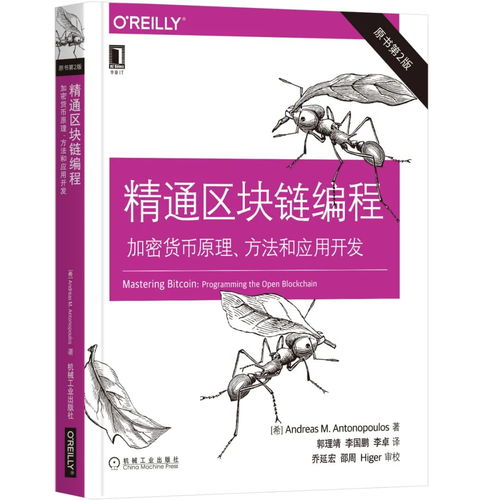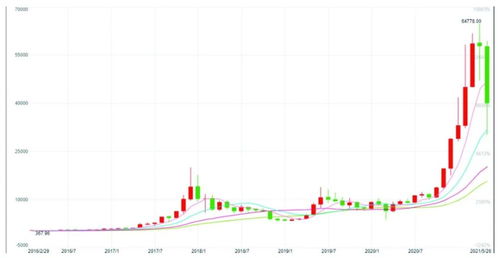Ah, you're curious about diving into the world of cryptocurrencies and want to know how to get your hands dirty with programming? Great choice! The crypto universe is vast and exciting, and with the right tools and knowledge, you can start crafting your own digital gold. So, let's embark on this journey and explore how you can program your way into the crypto realm.
Understanding the Basics: Cryptocurrency and Blockchain
Before we dive into the nitty-gritty of programming, let's take a moment to understand the foundation of cryptocurrencies. Cryptocurrency is a digital or virtual currency that uses cryptography for security. The most famous cryptocurrency is Bitcoin, but there are thousands more out there, each with its unique features and purposes.
The backbone of cryptocurrencies is the blockchain, a decentralized ledger that records all transactions across a network of computers. This technology ensures transparency, security, and immutability, making it the perfect fit for digital currencies.
Choosing Your Programming Language

Now that you have a grasp of the basics, it's time to pick your weapon of choice. Here are some popular programming languages that are well-suited for cryptocurrency development:
1. Python: Known for its simplicity and readability, Python is a go-to language for beginners and experts alike. It has a rich ecosystem of libraries and frameworks, making it easy to develop cryptocurrency applications.
2. JavaScript: If you're familiar with web development, JavaScript is a great choice. It's widely used for creating decentralized applications (dApps) and smart contracts on platforms like Ethereum.
3. Solidity: For Ethereum-based projects, Solidity is the language of choice. It's specifically designed for writing smart contracts, which are self-executing contracts with the terms of the agreement directly written into lines of code.
4. C++: For those who prefer performance and efficiency, C++ is a solid choice. It's used in various blockchain projects, including Bitcoin and Litecoin.
5. Go: Developed by Google, Go is known for its simplicity and efficiency. It's used in blockchain projects like Ethereum and Hyperledger.
Setting Up Your Development Environment

Once you've chosen your programming language, it's time to set up your development environment. Here's a step-by-step guide for setting up a Python environment for cryptocurrency development:
1. Install Python: Download and install the latest version of Python from the official website.
2. Install Virtualenv: Virtualenv is a tool that creates isolated Python environments. Install it using pip:
```
pip install virtualenv
```
3. Create a New Virtual Environment: Create a new virtual environment for your project:
```
virtualenv my_crypto_project
```
4. Activate the Virtual Environment: Activate the virtual environment:
```
source my_crypto_project/bin/activate
```
5. Install Required Libraries: Install the required libraries for cryptocurrency development, such as `requests` for making HTTP requests and `blockchain` for interacting with the blockchain:
```
pip install requests blockchain
```
Interacting with the Blockchain

Now that your environment is set up, let's explore how to interact with the blockchain. Here's a simple example of how to fetch the latest block from the Bitcoin blockchain using Python:
```python
import requests
from blockchain import Blockchain
Create a Blockchain object
blockchain = Blockchain()
Fetch the latest block
latest_block = blockchain.get_latest_block()
Print the block details
print(f\Block Number: {latest_block['number']}\)
print(f\Timestamp: {latest_block['timestamp']}\)
print(f\Transactions: {latest_block['transactions']}\)
Developing a Cryptocurrency Wallet
One of the most popular applications of cryptocurrency programming is developing a wallet. A wallet is a software program that stores private and public keys, allowing you to send and receive cryptocurrencies.
Here's a basic outline of how to create a simple cryptocurrency wallet in Python:
1. Generate Keys: Use the `ecdsa` library to generate a private and public key pair:
```python
from ecdsa import SigningKey, SECP256k1
private_key = SigningKey.generate(curve=SECP256k1)
public_key = private_key.get_verifying_key()
```
2. Create a Wallet Class: Create a class that encapsulates the wallet's functionality:
```python
class Wallet:
def __init__(self, private_key):
self.private_key = private_key
self.public_key = private_key.get_verifying_key()
def sign_transaction(self, transaction):
Sign the transaction using the private key
...
def get_public_address(self):
Derive the public address from the public key
...
```
3. Interact with the Blockchain: Use the wallet to send and receive transactions by interacting with the blockchain.
Building a Decentralized Application (dApp)
A decentralized application (dApp) is a software application
